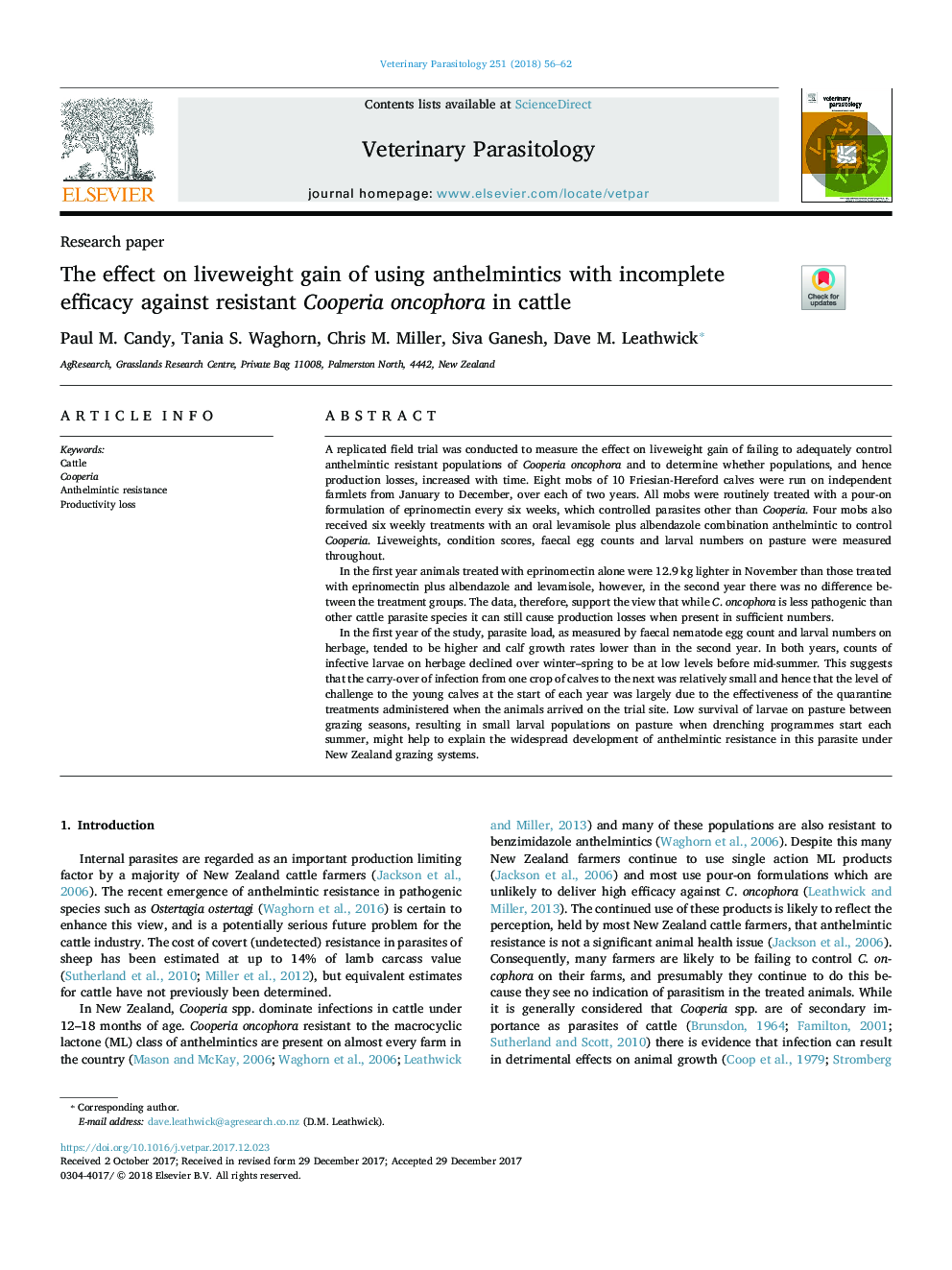| Article ID | Journal | Published Year | Pages | File Type |
|---|---|---|---|---|
| 8506141 | Veterinary Parasitology | 2018 | 7 Pages |
Abstract
In the first year of the study, parasite load, as measured by faecal nematode egg count and larval numbers on herbage, tended to be higher and calf growth rates lower than in the second year. In both years, counts of infective larvae on herbage declined over winter-spring to be at low levels before mid-summer. This suggests that the carry-over of infection from one crop of calves to the next was relatively small and hence that the level of challenge to the young calves at the start of each year was largely due to the effectiveness of the quarantine treatments administered when the animals arrived on the trial site. Low survival of larvae on pasture between grazing seasons, resulting in small larval populations on pasture when drenching programmes start each summer, might help to explain the widespread development of anthelmintic resistance in this parasite under New Zealand grazing systems.
Related Topics
Life Sciences
Agricultural and Biological Sciences
Animal Science and Zoology
Authors
Paul M. Candy, Tania S. Waghorn, Chris M. Miller, Siva Ganesh, Dave M. Leathwick,
